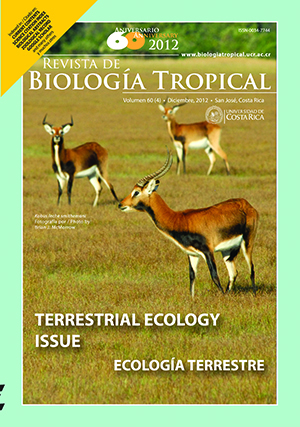Abstract
The stingless bees are important flowers visitors of several plant species, due to their feeding habits and foraging behavior, constituting an important group to maintain biodiversity and the dynamics of tropical communities. Among stingless bees, Tetragonisca angustula is widely distributed in tropical habitats, and has been considered an important pollinator of different plant families. To support a rational economic use of this group, there is a need to characterize the plant species that represent important sources as part of their diet, as preferred, alternative or casual food sources. The aim of this survey was to distinguish the plant species that T. angustula visited most often. The study was undertaken in four regions of the Atlantic Rainforest in Rio de Janeiro state (Brazil) over a year from March 2008 to February 2009. For this, we collected bees, flowering plants and bee pollen loads from the four sites, and evaluated pollen morphology in the laboratory. Field obser- vations showed the presence of plants belonging to ten different families and pollen loads showed the presence of pollen types belonging to 26 plant families. There were strong differences between pollen types, especially regarding pollen grain shape. The present survey suggests a high value of these plant species as trophic resources for the T. angustula in the understory of Atlantic Rainforest. Changes in these fragments of this forest may compromise the availability of resources for Tetragonisca angustula species and other stingless bees.Comments
Downloads
Download data is not yet available.






